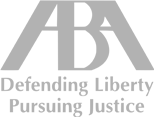Automobile
Automobile insurance can be used to protect your assets in situations where you are at fault for an accident and even in situations where there is a loss beyond your control. The reason it is an asset protection tool is because anything you are not insured for, depletes your assets.
Bodily Injury and Property Damage coverages provide protection for when an insured driver is at fault for an accident. Bodily Injury coverage provides for injuries caused by an insured driver for injured third parties up to the policy limits. Some of the most common limits are referred to as 15/30 and 100/300 where the first number is the maximum payment for each person injured and the second number is the maximum payment for an accident.
Bodily Injury coverage: Limits of 15/30 means that an insured is covered up to $30,000 per accident, but no individual claimant can get more than $15,000. 100/300 means that an insured is covered up to $300,000 per accident, but no individual claimant can get more than $100,000. Automobile policies can usually have limits as high as $1,000,000 per person and $1,000,000 per accident and as your limits increase, you will see the difference in premiums is not that great.
One of the main questions you should ask yourself when evaluating the proper coverage is “If there was a catastrophic accident, how much protection do I want?” Any protection that you do not opt for is considered self-insured, where the policy is paid to the claimant and you are responsible for the remainder.
Property Damage coverage: Property damage covers damage to another person’s property that an insured driver is responsible for. This coverage covers the damages for the other car(s) that are damaged in an accident, or any other property that is damaged, even a building if the driver lost control of the vehicle and damaged a building. This coverage can be exhausted easily if the policy limits are not high enough and it is not very expensive to increase this coverage. Automobile policies can usually have limits as high as $100,000 or so, and once again, you will see that the premium increase is not that great.
At this point if you are thinking that you have more than $1,000,000 in assets that you want to protect, there are other options for excess liability. The most common option is an Umbrella policy, which we will discuss under Umbrella Policy.
Uninsured Motorist Bodily Injury coverage: This coverage protects the insured and insured passengers if they are injured in an accident that is not the fault of the insured driver and the responsible driver lacks the appropriate insurance to pay for the injuries of the insured driver and passengers. One other important factor for this coverage is that the policy limits cannot be higher than the Bodily Injury coverage limits that was discussed above.
Collision coverage: This coverage usually protects the insured vehicle when the vehicle collides with something or when something collides with the vehicle, less an applicable deductible. The reason we say “usually” is because there are a few exceptions. Most notably, an intentional act is excluded. Although it does not sound logical, there are also a few collisions that are usually covered under comprehensive coverage rather than collision, such as falling objects or a collision with an animal.
Comprehensive Coverage: This coverage typically covers all other damage to the vehicle that isn’t covered by the Collision coverage (other than intentional acts).
 Deemer Law Group, PLLC Home
Deemer Law Group, PLLC Home





